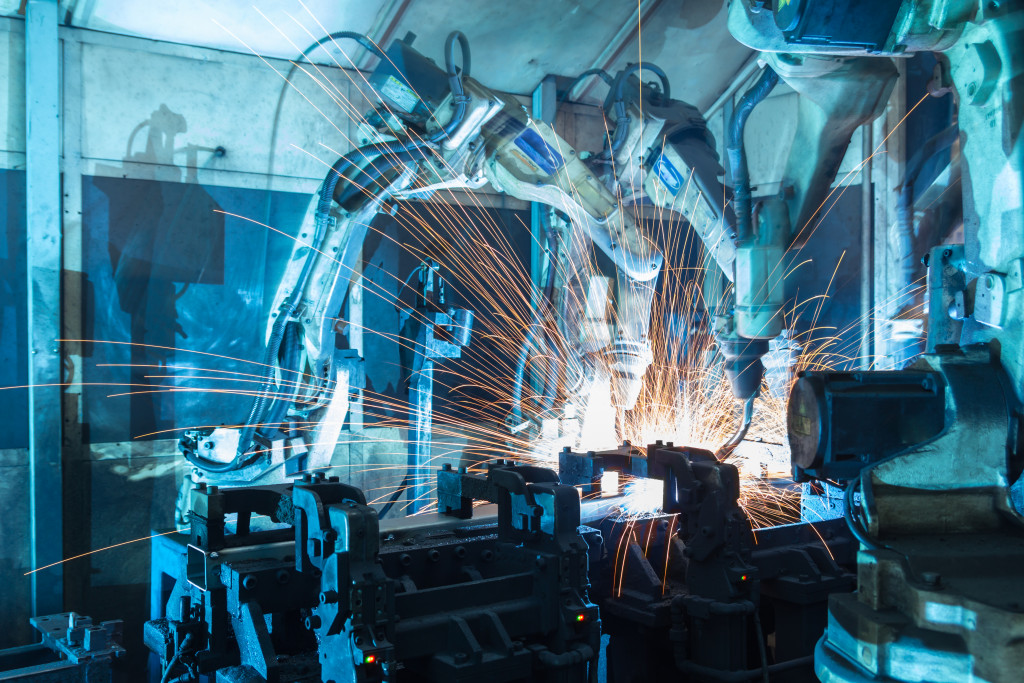Welding is an important process in manufacturing and construction. In recent years, there have been many advances in the technologies used in welding. In this article, we will discuss some of these new technologies and what to expect in the coming years.
Augmented Reality (AR) and Virtual Reality (VR)
Welding has always been a difficult skill to master, and as technology continues its forward progress we are finding new ways for welders of all levels. Augmented reality is one such method that allows users not only see what they’re doing but interact with it too! This makes training more engaging than ever before while also reducing costs associated with consumables like rods or wires by half when compared to traditional methods. Augmented reality welding also allows students to experience the process of real-world welds while interacting with a variety or different pieces. The closest thing you can get without actually being there, AR enables learners to see and feel what it’s like for their body positioning within such an environment using equipment that would be found in any modern-day shop – namely masks & torches. Augmented reality allows for more than just looking at objects—you get up close points of view, too. Consequently, this enhances learning through exploration because trainees have increased awareness about how things work when compared to other situations where only sight was used before engaging themselves in actual production.
No wonder this trendy technique isn’t leaving anytime soon, and we’ll see more developments in AR technology in the future.
On the other hand, virtual reality brings the user to a 100% computer-generated world and provides an environment where one can pretend they are welding. The experience is similar to that of a video game, but with some key differences, like how it feels when you’re actually there in real life vs on screen. Virtual reality environments are easier to develop than augment reality, and most developments in VR trickle down to AR, too. These technologies will be very useful in training, retraining, and upskilling, so keep an eye on these!
Robotic Welding
What does the future of manufacturing look like? It’s a question we’ve been asking ourselves for years, but recently, it seemed to take on new meaning. Robotics in production and welding not only works as robotic arms holding blowtorches, but include automation of many other production responsibilities and usage of smart technology on the production line. From preheating down to weld cleaning machines, everything can be automated. This will result in a more robust supply chain and helping to create a more circular economy.
With the use of machine learning, computer vision, and sensors combined with cloud computing on 5G networks, these will all lead to an IoT-capable industry. It will allow for better data collection from welding processes as well as flexible manufacturing, leading to near-perfect quality outputs and reports.
Welding and robotics have been linked for years now, and we can expect this to go further into the future. Global Robotic Welding is expected rise up to a value of $10B in 4 years, with an exponential 80% growth in industrial robot manufacture. Advancements in robotic welding will definitely help large manufacturers, but it may also affect workers as more of them will be replaced by robots. As such, any worker who thinks they will be affected by advancements in robotics should look into upskilling and specializing.

Advanced Arc Welding
The process of welding two metals together with an electric current is called arc welding. It’s used in industries like aerospace and automotive engineering where it’s critical for creating strong bonds between various alloys. This makes this type perfect when used in chemical, nuclear, or toxic areas or substances. As the technology develops further and new materials are used in the automotive and aerospace industry, there will be more innovations in advanced arc welding.
Laser Welding
Laser beam welding is a new innovative method of welding that creates deep, penetrative welds with superior bonds. The process allows for contact or non-contact; it relies on focused light energy which melts the joint between two pieces before they touch each other. This technique heats up metal faster than traditional methods by relying on preprogrammed routes. Because of its preprogramming capabilities, it is best integrated into advanced welding systems with robotics. They are also extremely high-precision and deeply penetrative.
The process of laser welding allows for more flexibility when it comes to metal thickness, as high-alloy metals can be used due to laser welding’s accuracy and high finish quality. However, there are some limitations like the need for thick materials that require much power which makes this type best suited in a lab setting where electricity costs can allow such usage. It uses as much as 100 kW, but it is able to weld 50mm per pass. It can also be used in jewelry making for customers who want their own custom designs done professionally with low maintenance over time. This type of welding requires welders who have both experience and training. While not everyone may have a use for laser welding, we may eventually see it becoming cheaper and more efficient, helping improve welding technology as a whole down the line.
Conclusion
Welding technology has come a long way and is continuing to develop with the help of robotics and lasers. While many people think that welding is a process that will soon be replaced by robots, there are still many areas where manual welding is more effective. However, we can expect to see more advancements in laser welding and robotic welding in the future as new materials are used in advanced industries like aerospace and automotive engineering. Any worker who thinks they may be affected by these advancements should look into upskilling and specializing in order to stay ahead of the competition. If you are a business owner, you may eventually be able to take advantage of these advancements — stay tuned!
